
Animation is a method in which figures are manipulated to appear as moving images. In traditional animation, images are drawn or painted by hand on transparent celluloid sheets to be photographed and exhibited on film. Today, most animations are made with computer-generated imagery (CGI). Computer animation can be very detailed 3D animation, while 2D computer animation can be used for stylistic reasons, low bandwidth, or faster real-time renderings. Other common animation methods apply a stop motion technique to two and three-dimensional objects like paper cutouts, puppets, or clay figures.

King Kong is a 1933 American pre-Code adventure fantasy monster film directed and produced by Merian C. Cooper and Ernest B. Schoedsack. The screenplay by James Ashmore Creelman and Ruth Rose was developed from an idea conceived by Cooper and Edgar Wallace. It stars Fay Wray, Robert Armstrong and Bruce Cabot, and tells the story of a giant ape dubbed Kong who attempts to possess a beautiful young woman. It features stop-motion animation by Willis O'Brien and a music score by Max Steiner. It is the first entry in the King Kong franchise.

Stop motion is an animated filmmaking technique in which objects are physically manipulated in small increments between individually photographed frames so that they will appear to exhibit independent motion or change when the series of frames is played back. Any kind of object can thus be animated, but puppets with movable joints or plasticine figures are most commonly used. Puppets, models or clay figures built around an armature are used in model animation. Stop motion with live actors is often referred to as pixilation. Stop motion of flat materials such as paper, fabrics or photographs is usually called cutout animation.
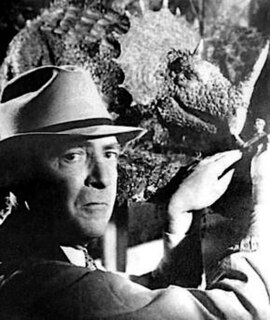
Willis Harold O'Brien was an American motion picture special effects and stop-motion animation pioneer, who according to ASIFA-Hollywood "was responsible for some of the best-known images in cinema history," and is best remembered for his work on The Lost World (1925), King Kong (1933) and Mighty Joe Young (1949), for which he won the 1950 Academy Award for Best Visual Effects.

Jason and the Argonauts is a 1963 Anglo-American independent mythological fantasy adventure film produced by Charles H. Schneer and directed by Don Chaffey. Starring Todd Armstrong as Jason, along with Nancy Kovack, Honor Blackman and Gary Raymond, the film was distributed by Columbia Pictures.

The 7th Voyage of Sinbad is a 1958 Technicolor heroic fantasy adventure film directed by Nathan H. Juran and starring Kerwin Mathews, Torin Thatcher, Kathryn Grant, Richard Eyer, and Alec Mango. It was distributed by Columbia Pictures and produced by Charles H. Schneer.

Raymond Frederick Harryhausen was an American artist, designer, visual effects creator, writer and producer who created a form of stop motion model animation known as "Dynamation".
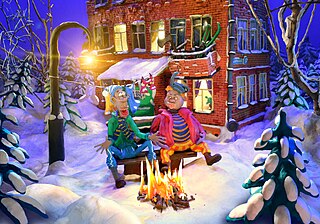
Clay animation or claymation, sometimes plasticine animation, is one of many forms of stop-motion animation. Each animated piece, either character or background, is "deformable"—made of a malleable substance, usually plasticine clay.
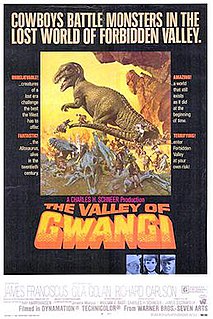
The Valley of Gwangi is a 1969 American fantasy Western film produced by Charles H. Schneer and Ray Harryhausen, directed by Jim O'Connolly, written by William Bast, and starring James Franciscus, Richard Carlson, and Gila Golan.

Mighty Joe Young is a 1949 American black and white fantasy film distributed by RKO Radio Pictures and produced by the same creative team responsible for King Kong (1933). Produced by Merian C. Cooper, who wrote the story, and Ruth Rose, who wrote the screenplay, the film was directed by Ernest B. Schoedsack and stars Robert Armstrong, Terry Moore, and Ben Johnson in his first credited screen role. Animation effects were handled by Ray Harryhausen, Pete Peterson and Marcel Delgado.

The Son of Kong is a 1933 American Pre-Code adventure monster film produced by RKO Pictures. Directed by Ernest Schoedsack and featuring special effects by Willis O'Brien and Buzz Gibson, the film stars Robert Armstrong, Helen Mack and Frank Reicher. The film is the sequel to King Kong, being released just nine months after and the 2nd entry of King Kong franchsie.

In sculpture, an armature is a framework around which the sculpture is built. This framework provides structure and stability, especially when a plastic material such as wax, newspaper or clay is being used as the medium. When sculpting the human figure, the armature is analogous to the major skeleton and has essentially the same purpose: to hold the body erect.
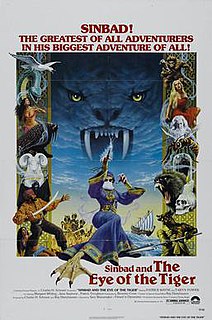
Sinbad and the Eye of the Tiger is a 1977 fantasy film directed by Sam Wanamaker and featuring stop motion effects by Ray Harryhausen. The film stars Patrick Wayne, Taryn Power, Jane Seymour, and Patrick Troughton. The third and final Sinbad film released by Columbia Pictures, it follows The 7th Voyage of Sinbad (1958) and The Golden Voyage of Sinbad (1973).
James Danforth, is an American stop-motion animator, known for model-animation, matte painting, and for his work on When Dinosaurs Ruled the Earth (1970), a theme-sequel to Ray Harryhausen's One Million Years B.C. (1967). He later went on to work with Ray Harryhausen on the film Clash of the Titans (1981) to mainly do the animation of the winged-horse Pegasus.
David W. Allen was an American film and television stop motion model (puppet) animator.
Marcel Delgado was a sculptor and model-maker. His technique revolutionized the stop motion film industry. He is best known for his work on the 1933 film King Kong.
An armature is the name of the kinematic chains used in computer animation to simulate the motions of virtual human or animal characters. In the context of animation, the inverse kinematics of the armature is the most relevant computational algorithm.

Charles Hirsch Schneer was an American film producer, best known for working with Ray Harryhausen, the specialist known for his work in stop motion model animation.
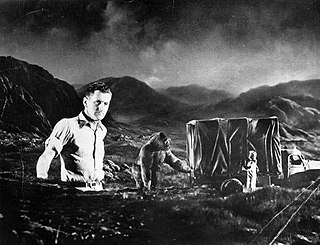
Pete Peterson was an American motion picture special effects and stop-motion animation pioneer, best remembered for his work with Willis H. O'Brien on Mighty Joe Young (1949), The Black Scorpion (1957) and The Giant Behemoth (1959).
Neville Buchanan is a stop motion animator and director based in England. His style is informed by his mentor Ray Harryhausen His work has been likened to Harryhausen's predecessor Willis O'Brien with its emphasis on meticulously detailed puppets sculpted onto armatures forwarding the narrative.














